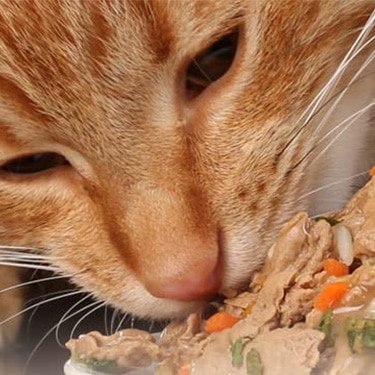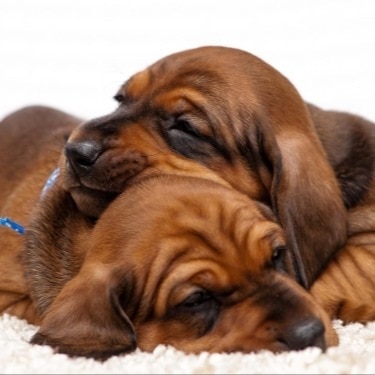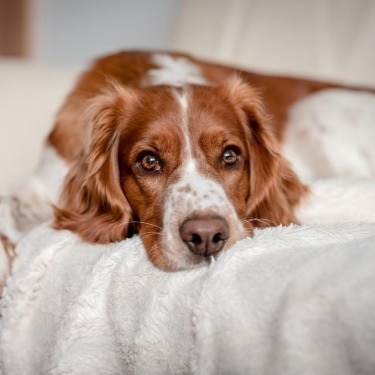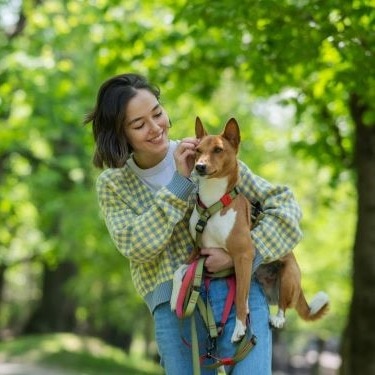
-
Find the right food for your petTake this quiz to see which food may be the best for your furry friend.Find the right food for your petTake this quiz to see which food may be the best for your furry friend.Featured products
 Adult Large Breed Chicken & Barley Recipe Dog Food
Adult Large Breed Chicken & Barley Recipe Dog FoodSupports healthy joints, lean muscle, and beautiful coat for large breed dogs
Shop Now Adult Chicken & Barley Recipe Dog Food
Adult Chicken & Barley Recipe Dog FoodSupports lean muscle and beautiful coat for adult dogs
Shop Now Hill's Science Diet Adult Chicken & Beef Entrée Dog Food
Hill's Science Diet Adult Chicken & Beef Entrée Dog FoodChicken & Beef Entrée in a delicious loaf with complete & balanced nutrition to help keep adult dogs active and healthy
Shop NowFeatured products Adult Turkey & Liver Entrée Cat Food
Adult Turkey & Liver Entrée Cat FoodPrecisely balanced nutrition with the delicious taste of minced turkey & liver to help fuel the energy needs of cats during the prime of their life
Shop Now Adult Tender No Corn, Wheat, Soy Chicken & Vegetables Stew Cat FoodShop Now
Adult Tender No Corn, Wheat, Soy Chicken & Vegetables Stew Cat FoodShop Now Senior Vitality Adult 7+ Tuna & Vegetables Stew
Senior Vitality Adult 7+ Tuna & Vegetables StewImproves Everyday Ability to Get Up & Go
Shop Now -
Dog
- Dog Tips & Articles
-
Health Category
- Weight
- Food & Environmental Sensitivities
- Urinary
- Digestive
- Joint
- Kidney
-
Life Stage
- Puppy Nutrition
- Adult Nutrition
- Senior Nutrition
Cat- Cat Tips & Articles
-
Health Category
- Weight
- Skin & Food Sensitivities
- Urinary
- Digestive
- Kidney
-
Life Stage
- Kitten Nutrition
- Adult Nutrition
Featured articles How to Properly Mix Wet & Dry Pet Foods
How to Properly Mix Wet & Dry Pet FoodsAn Orange cat eating from a bowl filled with mixed food
Read More The Science Behind Our Love for Pets
The Science Behind Our Love for PetsLearn the scientific reasons why we have such strong connections with our pets, and what science says about the love between humans and our furry friends.
Read More What Is Littermate Syndrome? Pet Adoption Guide
What Is Littermate Syndrome? Pet Adoption GuideLearn more about littermate syndrome in dogs and cats and how to successfully navigate adoption and early socialization processes.
Read More -


Your pooch loves to splash in puddles and won't stay out of the pool, but when it's time for a bath, they tuck their tail and hide. Why do dogs hate baths so much? If it's not the water, what is it about getting clean that makes so many dogs shiver and whine? Discover what might be behind your dog's fear of bath time, and keep reading to learn how to give a dog a bath who hates baths.
Why Do Dogs Hate Baths?
While it's true that not all dogs like to play in water, this doesn't necessarily explain why your dog doesn't like to take baths. Even water-loving breeds like Labrador retrievers often balk at being bathed. So if it's not about the water, why do dogs hate baths? A number of factors could explain why your pup hates going near the tub or sink.
Recalling Bad Associations
Just one bad experience associated with bathing can traumatize your dog and teach them to fear baths, says The Dodo. Getting scalded by hot water, slipping and falling in the tub, getting water up the nose or getting stinging shampoo in the eyes can all make your pup feel like baths aren't safe. Even upsetting experiences with other grooming activities, like pain caused by getting their nails clipped too short, can create bad associations with bath time if they're done in close conjunction with baths.
Loss of Control
When your dog goes swimming or splashes in a stream, it's a fun activity they choose to participate in. Baths, on the other hand, are typically forced on dogs, and involve being handled and having their bodies moved around in ways they don't like. This loss of choice and control over what happens to them can be very upsetting to a dog.
Unfamiliarity
Dogs who are new to baths, or who aren't bathed as often, may simply be freaked out by the unfamiliar experience of being plunged into a tub of water and soaped up with shampoo. This, in turn, can create negative associations that make them fearful of future baths.
Bath Time Feels Stressful
Sometimes, dogs aren't the only ones who hate their bath times. Dogs take their emotional cues from their pet parents. If you treat the bath like a stressful experience, your dog will follow suit, points out Dogster. Shouting at your dog, handling them roughly and hurrying through the bath all teach your dog that baths are something to fear. Even if you're gentle with your pup, if you bathe them while you're frustrated with them, they'll be able to sense your frustration, which can be enough to make them dread baths in the future.
Do Dogs Need to Take Baths?
Does your dog actually need regular bathing? It depends. Much of the reason for bathing dogs is simply to make them easier to live with. You don't want your dog tracking mud everywhere, nor do you enjoy cuddling a stinky pup. Short-haired breeds with healthy skin don't actually require bathing for their own benefit, and they don't really need to take regular baths, unless they tend to get dirty a lot. In many cases, wiping them down with pet wipes might be all that's needed. However, if you have a wrinkly breed like a pug or shar-pei, you should also be sure to wipe the folds between their skin regularly.
Long-coated and curly-haired breeds, on the other hand, benefit from regular shampoo and conditioning to help keep their fur from matting and becoming unmanageable, although daily brushing can also help. Hairless breeds like the Mexican hairless need regular baths to prevent their skin from drying out. Conversely, dogs with oily skin, like cocker spaniels, also need frequent baths to prevent oil buildup.


Tasty Tips
How to Bathe a Dog Who Hates Baths
If your dog has the type of skin or coat that makes bathing necessary, the best thing you can do is recondition them to enjoy baths, or at least to not be afraid of them. This involves replacing negative associations with positive ones along with time and patience. How much so depends on whether your dog is terrified of baths, just mopey about having to take them or somewhere in the middle.
1. Stay Calm
First, make sure you're projecting a positive attitude about giving your dog a bath. If you're feeling rushed, stressed or frustrated with your dog, you should wait to bathe them until a time when you're more relaxed, which will in turn help your dog feel calmer.
2. Create Positive Associations

Start turning your dog's fear of the tub into anticipation by moving your dog's food bowl into the bathroom next to the tub, and leave a trail of treats leading up to it, recommends Wag Walking. Don't attempt to give them a bath right away, but give them time to form positive associations with the bathroom and the tub. When you think your dog is ready, move their bowl into the tub. Allow them to climb in on their own if they're large enough, reinforcing a sense of choice and being in control.
Once your dog is able to be in the bathtub without fear, remove their food and try turning on the water. Give them toys to play with in the tub as well as treats. You might try smearing some peanut butter on the wall and letting them lick it off while the water runs. When your dog is able to tolerate hearing the running water and getting their paws wet, try splashing a little water on them, keeping things fun and light and making a game out of it. Gradually work up to wetting them down and lathering them up with shampoo, while at the same time showering them with praise and soothing words. At any stage of this process, if your dog becomes agitated, stop and try again tomorrow.
3. Prevent Negative Associations
Take precautions to make your dog feel safe during bath time. Place a nonskid mat or nonslip stickers in the bottom of the tub to prevent them from slipping, and consider using a bath harness like the ones used by professional groomers to help your dog feel more secure. Take extra care to be gentle with your dog. Be sure to test the temperature of the water and make sure it's not too hot or too cold. Avoid spraying or pouring water directly in their face; instead, use a washcloth on the face and other sensitive areas. And save other dog grooming activities, like trimming nails and brushing teeth, for another day.
While a number of possibilities can answer the question of why do dogs hate baths, the solutions are the same regardless of what triggers your pet's dislike. With plenty of patience, gentleness and care, you can turn your dog's attitude toward baths around and make bath time more enjoyable and less stressful for you both.


Jean Marie Bauhaus is a pet parent, pet blogger, and novelist from Tulsa, Oklahoma, where she usually writes under the supervision of a lapful of fur babies.
Related products

Chicken & Beef Entrée in a delicious loaf with complete & balanced nutrition to help keep adult dogs active and healthy

Chicken & Barley Entrée in a delicious loaf with great taste and precisely balanced nutrition to support 5 essential building blocks for lifelong health

Supports healthy joints, lean muscle, and beautiful coat for large breed dogs

Supports lean muscle and beautiful coat for adult dogs
Related articles

Discover how the field of dog science is giving us more and more insights into the inner workings of our furry best friends.

Learn how to help keep your dog's immune system in tip-top shape, including nutritional immune system support for dogs and other strategies.

Your dog's coat and skin are a big part of your dog's overall health. Ensure you keep your dog's coat healthy, by following these simple tips.

Wondering where can I buy a dog? Consider adoption and explore the pros and cons of adopting a dog from a breeder versus an animal shelter.

Put your dog on a diet without them knowing
Our low calorie formula helps you control your dog's weight. It's packed with high-quality protein for building lean muscles, and made with purposeful ingredients for a flavorful, nutritious meal. Clinically proven antioxidants, Vitamin C+E, help promote a healthy immune system.
Put your dog on a diet without them knowing
Our low calorie formula helps you control your dog's weight. It's packed with high-quality protein for building lean muscles, and made with purposeful ingredients for a flavorful, nutritious meal. Clinically proven antioxidants, Vitamin C+E, help promote a healthy immune system.

